

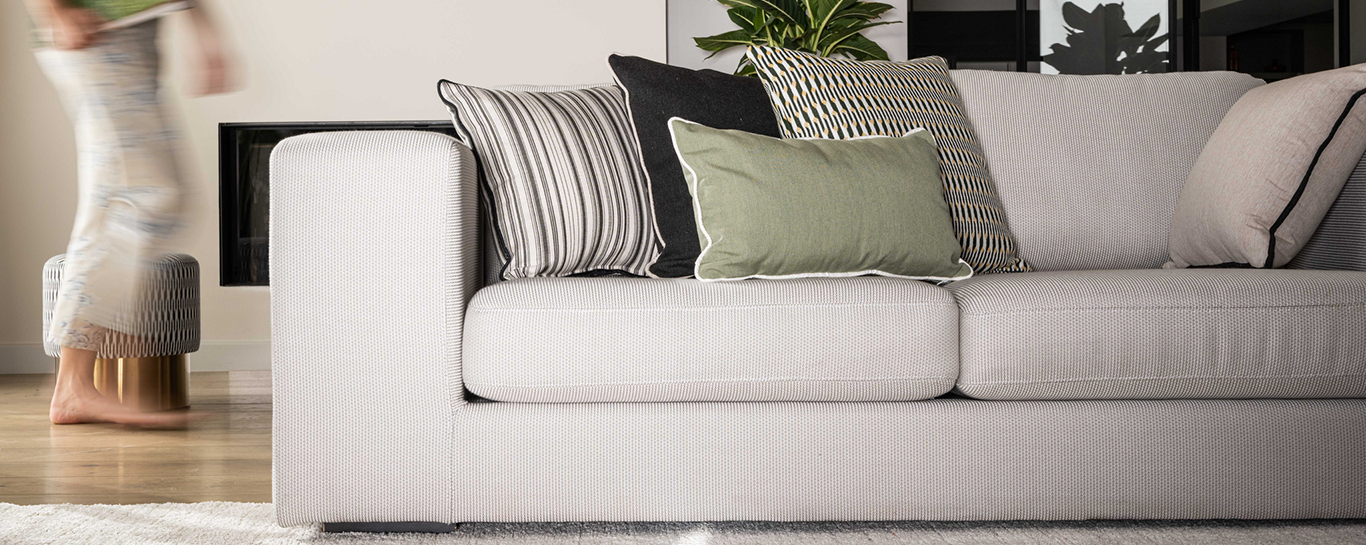
Keeping upholstery fabric clean and bright can be accomplished via a number of methods. There’s the practice of keeping furniture covered in plastic or refusing to let children, pets, food, or drink anywhere near it. Regardless of whether you’re trying to maintain the original grandeur and functionality of indoor or outdoor furniture, however, these approaches usually get in the way of living life itself, and, even if there are no spills or accidents, cleaning across the lifetime of a piece of upholstered furniture will still be necessary.
At Trivantage, we approach the problem of cleaning and maintaining upholstery fabric a little differently. In addition to selling high-performance and long-lasting fabrics that retain their color and appearance for years, we also encourage upholsters and end users to adhere to the following instructions for how to clean their upholstery fabric. Almost all spills and accidents can be handled in a DIY fashion that, most of the time, require neither specialized cleaning products nor professional cleaning services. Whether you’re dealing with wine in the living room, marinara sauce in the dining room, or pet stains on the new patio furniture, we have an approach and a solution that will likely work for you.
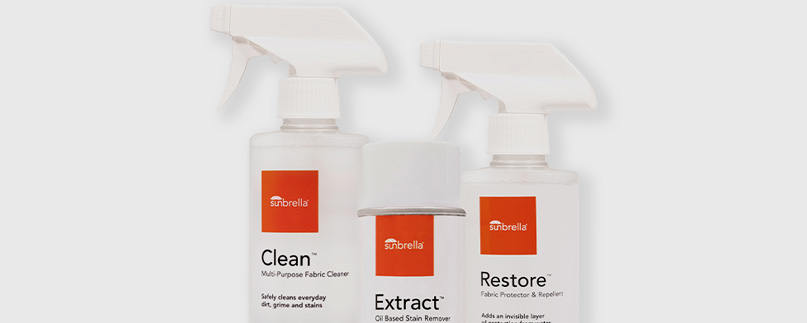
As has already been stated, the most important consideration when it comes to cleaning different upholstery fabrics relates to the manufacturer's instruction. To that end, here are some manufacturers' cleaning recommendations.
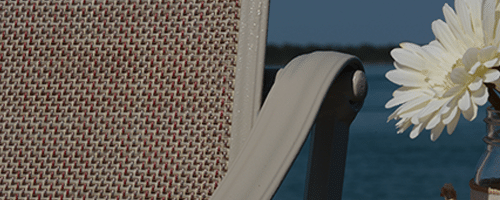
Phifertex is a leading high-performance fabric. Made from vinyl-coated polyester, all Phifertex fabrics are infused with Microban®, a proprietary antimicrobial protection, that assists in keeping fabric clean and long-lasting by inhibiting the growth of bacteria, mildew, and mold.
Here are cleaning instructions for Phifertex fabrics:
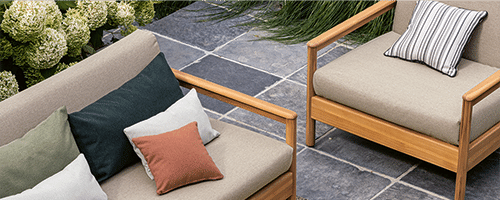
Sunbrella upholstery fabrics are high-performance fabrics that are unique among upholstery performance fabrics in that they are made from 100% solution-dyed acrylic that is then spun into yarn, which means the color is not a coating. It goes all the way through the fabric. Sunbrella fabrics are UV resistant, fade resistant, water repellant, and remarkably easy to clean.
To clean Sunbrella upholstery fabrics, reference Sunbrella's Stain Chart PDF and follow the steps below:
For spot cleaning, mix a mild soap with some water and apply it to the spot with a spray bottle. Dab or scrub the sprayed area lightly with a clean, soft sponge or cloth. Rinse with clean water to remove soap residue and allow to air dry. Repeat until the spill or mess has been removed.
For stubborn spots or stains, add some household bleach to the spot cleaning solution of water and mild soap. Apply a light mist of the soap and bleach solution to the stain and scrub the area with a clean sponge or cloth. Use cold water to rinse thoroughly so that all of the bleach and soap cleaning solution is off the fabric. Repeat until the stain is gone. Once the stain is gone, let the fabric air dry.
A few important notes: While Sunbrella offers some of the best protection against stains among commercial upholstery fabrics, complete removal of stains and spills isn't guaranteed if spills and other messes are allowed to build up and are therefore not addressed immediately. Also, it's important to avoid scrubbing too hard at stains or spills on Sunbrella fabrics. Never use hard bristle brushes or other abrasive cleaning tools against the fabric. Be cautious when using the bleach and soap solution, as it can have negative effects on the environment and can also discolor fabrics and surfaces around the Sunbrella fabric.
Here are specific care and cleaning instructions for Sunbrella Sling and Sunbrella Sheers/Drapery.
While no spill or stain is welcome, some in particular strike fear in the hearts of fabric furniture owners. Here are some of the more common, tough to beat stains, and how to best tackle them. (Just remember, when it comes to following this advice, never, ever go against the manufacturer's instructions, and always be sure to test your cleaning agent and method out on an area of your fabric that isn't easily seen.)
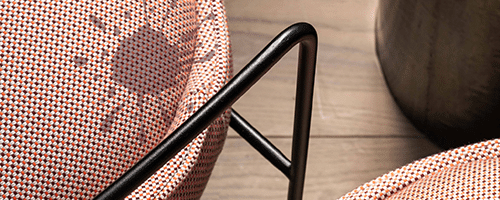
To remove a red wine stain from upholstery, it's helpful to act quickly. Do not scrub the spot at all. Instead, add a dry and powdery substance to the spill. Options you're likely to have on hand include: baking soda, table salt, talcum powder, and cat litter. Allow the dry substance to completely soak up the wine. Then blot it up into a clean towel or microfiber cloth.
If you acted quickly enough, this method may be all you need. However, if the red wine soaked into the fabric at all, you have a number of other options to try out:
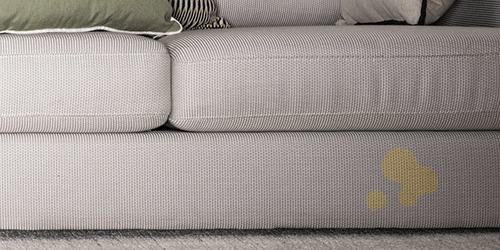
As with all spills and messes, cleaning a pet's mess is easier if you act immediately. Regardless of when you get to it, however, these are your best bets to get your upholstery clean again.
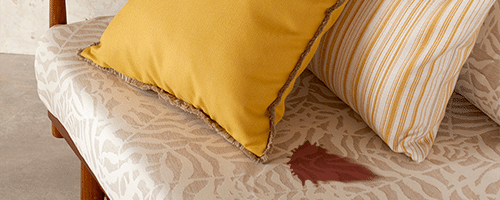
Once again, immediate attention is your best bet to ensure a tomato sauce spill doesn’t result in an unsightly stain. First, blot the spill up with clean paper towels, taking care not to rub the sauce into the upholstery. Using cold water, douse the affected area with a spray bottle and let it soak in for one minute. Blot the affected area again with fresh paper towels. Make a solution of 2 cups of clean water and 1 tablespoon of bleach-free dishwashing soap. Dampen a clean cloth with the dishwashing soap solution and blot at the stain until it disappears. Once the affected area is tomato sauce-free, wet another cloth with cold, clean water and blot the affected area to remove the dishwashing soap and water solution. Using a dry, clean towel, blot the wet area and allow it to air dry.
If the above method isn’t effective, try the combination of hydrogen peroxide and dishwashing liquid that is listed in the red wine section above.
Without a doubt, the easiest way to keep upholstery fabric clean is to craft furniture with fabric that resists stains, mildew, mold, bacteria, and fading. Find out more about Trivantage’s array of high-performance upholstery fabric today.
Maintaining the pristine condition of your upholstery fabric doesn't solely rely on reacting to spills and stains Regular vacuuming using a soft brush attachment can help remove surface dust and dirt before they become ingrained in the fabric. This simple practice can prevent particles from settling into the fabric's fibers and potentially causing discoloration over time.
You may also consider rotating cushions and pillows regularly. This ensures even wear and tear across all sides and prevents one area from becoming more faded or worn than the others. Rotating cushions can also help distribute the weight and pressure, maintaining the shape and resilience of your upholstery.
In high-traffic areas of your home, using furniture covers or throws can provide an extra layer of protection for your upholstery. These covers are easily washable and can shield your furniture from daily wear and tear, especially in areas where spills or accidents are more likely to occur.
Remember, a little care now can save you the hassle of deep cleaning later.
The purpose of this guide is to give fabricators some general guidelines and product information.
This guide should not be considered as the sole source of information on cleaning upholstery fabric. This guide is strictly informational.
Please reach out to your local customer care team for more guidance.